Costa Rican Tarazu Coffee Bean Variety Rosa Coffee Bean difference between Kadulakaduai Coffee Bean
As one of the most fascinating and beautiful countries in Central America, Costa Rica is the best choice for ordinary people to visit. But if you have a coffee habit, you should value his booming coffee industry more. The Costa Rican coffee on the front street as a whole can be described as sweet as honey. Whether it's ration beans, milasu estate, musicians or the latest blueberries, front street always brings out costa rican coffee when there's a "tricky" customer who wants sweet black coffee. Today, blueberries, like this coffee bean friends do not miss oh.
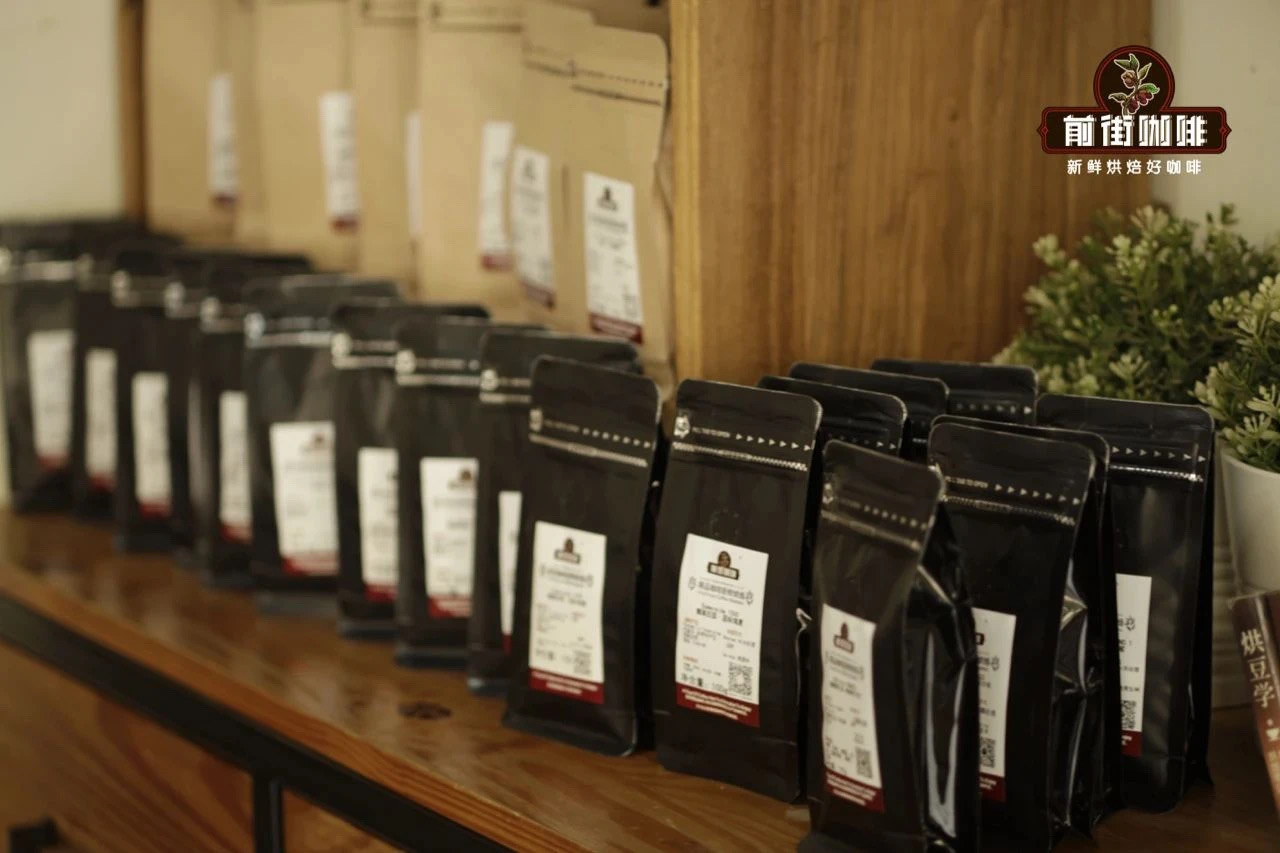
Blueberry, drink friends should know that it is a very special coffee. When dry, there will be a faint rose fragrance, elegant and delicate. The instant it entered his mouth, the blueberry fudge texture exploded in his mouth. The juice was full and dissipated, and the mint coolness gave people a second shock. The boss!
Friends who haven't drunk this coffee can take a look at the green bean information of this coffee and preview it in advance:
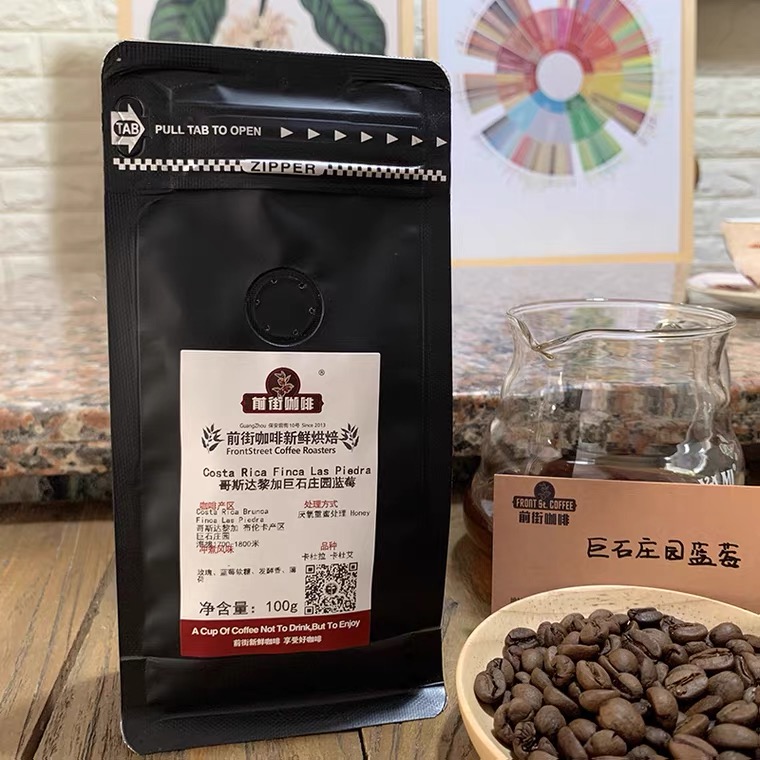
Boulder Manor, Costa Rica Blueberry
Origin: Brenca, Costa Rica
Manor: Stonehenge
Altitude: 1700-1800 m
Treatment method: anaerobic heavy honey treatment
Breeds: Kadura, Kaduai
Through this coffee, the front street will test everyone well. Do you know how many other coffee regions Costa Rica has besides Brunca? Costa Rica may be small (compared to China), but it has eight coffee-producing areas: Central Valley, West Valley, Tres Rios, Tarajo, Turialba, Orosi, Guanacaste and Brunca. In addition to the other seven producing areas, let's first introduce the Brunka coffee producing area, where coffee production accounts for about one-fifth of the country's coffee production. Brunka is a medium-altitude region, where coffee is grown at an altitude of about 800 - 1200 meters. Most of the coffee grown in this region is HB and above.
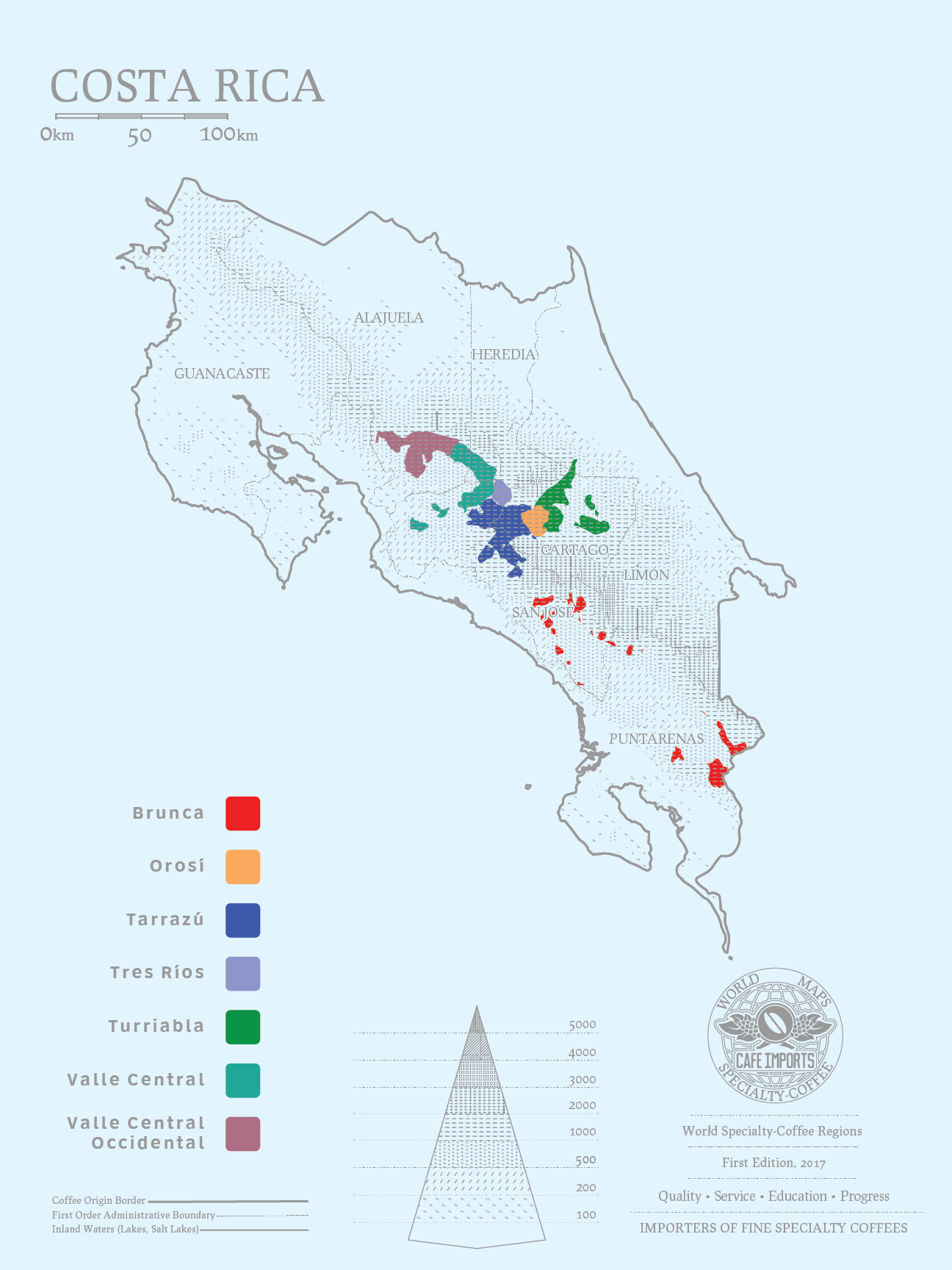
According to Front Street, Stonehenge Manor is located in the south of Costa Rica, connected to Panama, and has a diverse microclimate, so it is very suitable for coffee cultivation. Due to the low altitude of the region, coffee in this region is traditionally produced on hillside farms at altitudes between 800 and 1,700 meters with an average temperature of 22 ° C. The local conditions are suitable for the harsh coffee growing environment. The total coffee cultivation area is about 12,000 hectares, distributed on 4200 farms, and coffee accounts for about 20% of the country's coffee production.
So how did Stonehenge get its name? A large number of carvings dating from 200 BC to 1500 BC were unearthed near the manor, so the manor was named after the boulder.
The treatment of blueberries is also a point that many customers wonder about. If it's about honey processing in Costa Rica, you'll know something about it. Honey treatment is actually a process between sun and water, in order to allow coffee farmers to produce dried and sweeter coffee in a shorter time and effectively reduce the risk of accidental effects of excessive fermentation. After removing the peel, the mucus in the coffee fruit is kept and dried naturally. When the moisture content is reduced to 11%, it can be used.
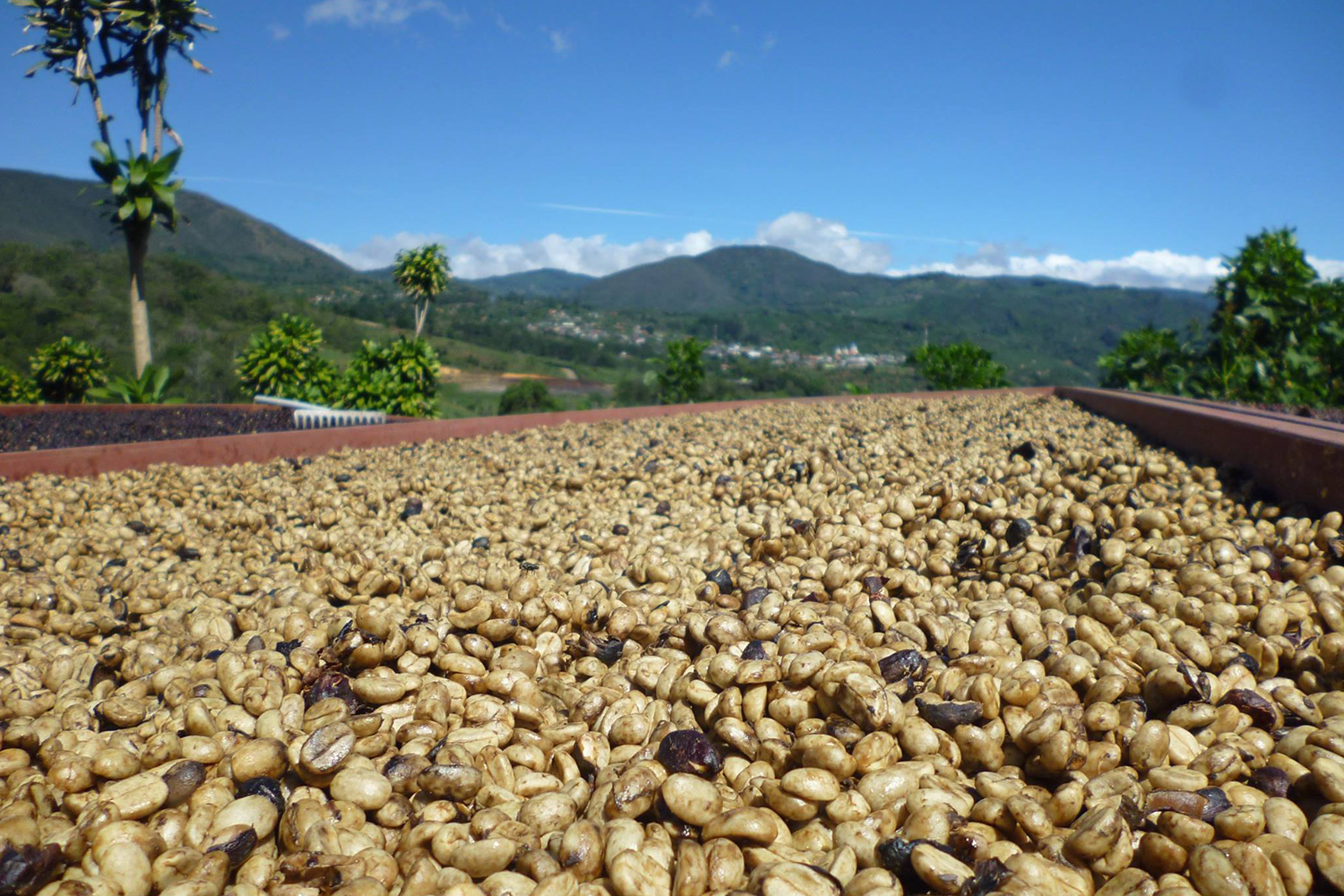
Anaerobic heavy honey processing is slightly more complicated than honey processing. After picking the perfect coffee cherries, the pickers soak them in plastic jars to remove leaves, impurities and insufficient density coffee cherries. Before the first fermentation stage, prepare the strains: yeast, lactic acid, sucrose, blueberry fructose, orange juice, mint juice, etc. The first fermentation stage is 30 hours. This stage is to stimulate the sweetness and fruit tonality of coffee. Remove the peel and place in a round plastic jar. Add the prepared culture liquid, input carbon dioxide and control the pH value of the bucket. Cold nights allow coffee beans to ferment longer without worrying about the risk of overfermentation. The coffee comes out clean and full bodied with intense cherry acidity and typical Costa Rican sweet fruit aromas. After finishing anaerobic fermentation, it enters the second stage of honey treatment fermentation. During the day, the beans with pectin are placed on African beds, the temperature is controlled below 40 degrees Celsius, and after 8 hours of sun exposure, the fruits are placed in a greenhouse for 12 hours, and the process is repeated for 20 to 25 days. When the moisture content of coffee beans reaches 15%, enter the stable period, put the coffee beans into the inner bag and the outer bag, and stand in this state for one month.
Beyond blueberries, what coffee is there worth buying in Costa Rica? Front Street recommends Costa Rica's ration bean-Tara beads. How'd it go? Place the name of the region directly on the coffee beans, and one bean represents the flavor of the entire region. This was the original intention of Front Street to make ration beans. Qianjiekou grain beans series is a group of beans with high cost performance, which may not be as good as beans of famous estates in some aspects, but from this group of beans, you can drink the main flavor of each major producing area in a high-priced way, so that coffee novices can determine their favorite producing area at a very low price.
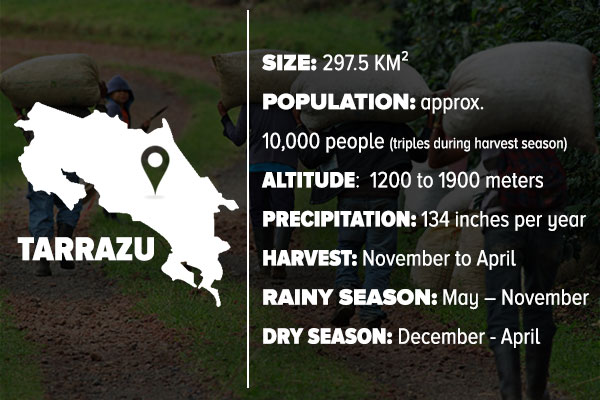
Let's take a look at this production area from the ration beans of the previous street! The Tarrazú growing area of Costa Rica is locally known as Los Santos because its states (similar to towns) are named after various saints. Tarasu is about a two-hour drive from San Jose and is full of roads and coffee plantations that circle the mountainside. Tara beads is an ideal place to grow Arabica coffee beans. The area is famous for producing coffee with obvious acidic quality, mainly because the diamine content of this area is also very related. Not only that, the altitude of 1200-1900 meters makes coffee cultivation here have various microclimate differences.
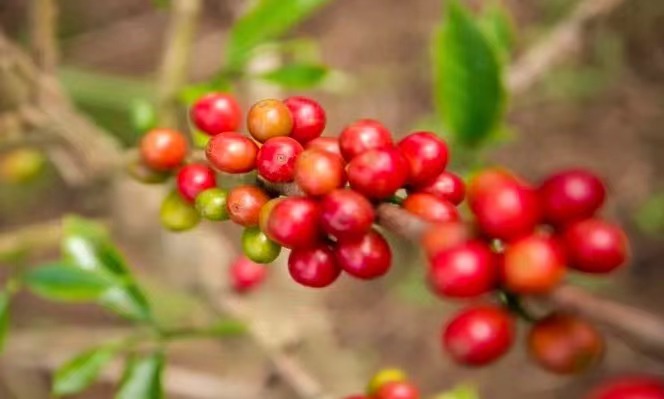
The main beans grown in the area are Caturra and Catuai. Caturra is a variant of Bourbon Arabica coffee. It matures faster than most coffee plants and has disease resistance. Catuai is a high-yielding variety of Caturra and New World. It is a sturdy plant that can withstand strong winds and heavy rains. Both varieties have rich flavors and produce some of the finest coffee beans.
So how do we brew coffee beans in Costa Rica? Qianjie thought it would be better to cook according to the standard method first:
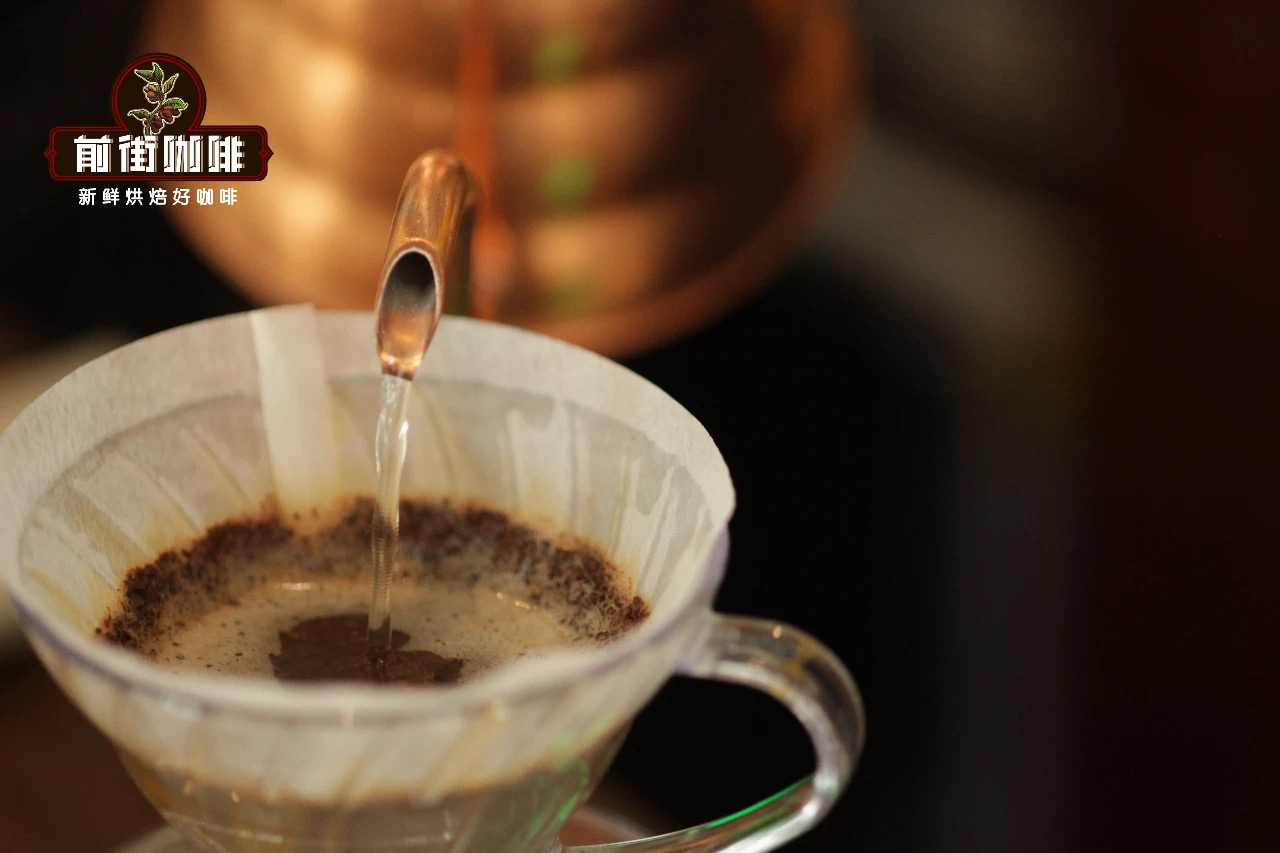
Front Street Brewing Parameters:
V60 filter cup
Water temperature 91℃
Water to powder ratio 1:15
Powder 15g
Abrasion (80% pass rate of China No.20 standard sieve)
Qianjie brewing method: steam with 30 grams of water for 30 seconds, inject water in a small circle to 125 grams for segmentation, continue to inject water to 225 grams when the water level is about to expose the powder bed, remove the filter cup when the water level is about to expose the powder bed,(steam start timing) extraction time is 200 ".
Combined with the relevant information about coffee beans and some flavor descriptions on the packaging of Qianjie Coffee, you can also try to drink various flavor characteristics of coffee at home.
Professional coffee knowledge exchange More coffee bean information Please pay attention to coffee workshop (Weixin Official Accounts cafe_style)
More fine coffee beans, please add private WeChat Qianjie Coffee, WeChat: kaixinguoguo0925
Important Notice :
前街咖啡 FrontStreet Coffee has moved to new addredd:
FrontStreet Coffee Address: 315,Donghua East Road,GuangZhou
Tel:020 38364473
- Prev
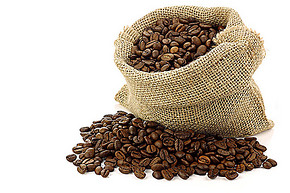
Description of flavor and taste of Costa Rican coffee
Following Cafe Review (Wechat official account vdailycom) found that Costa Rican coffee has a small shop of its own with full particles, ideal acidity and unique strong flavor. The coffee industry in Costa Rica, originally controlled by the Costa Rican Coffee Industry Company (InstitutodelCafdeCostaRica, ICAFE), is now under the control of the official Coffee Committee (Oficina)
- Next
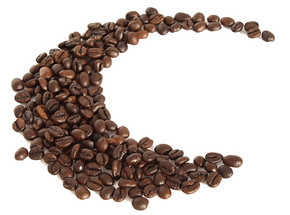
What is the quality of Costa Rican coffee beans?
Following Ka Pin (Wechat official account vdailycom) found that Beautiful Cafe opened a small shop of its own S.H.B. It is a very hard bean with an altitude of more than 1500 meters above sea level, which means high quality Costa Rican coffee. This extra-hard coffee bean suitable for medium and heavy roasting has a strong sour taste and charming aroma. Costa Rican SHG coffee is usually full of grains and clear in flavor.
Related
- Detailed explanation of Jadeite planting Land in Panamanian Jadeite Manor introduction to the grading system of Jadeite competitive bidding, Red bid, Green bid and Rose Summer
- Story of Coffee planting in Brenka region of Costa Rica Stonehenge Manor anaerobic heavy honey treatment of flavor mouth
- What's on the barrel of Blue Mountain Coffee beans?
- Can American coffee also pull flowers? How to use hot American style to pull out a good-looking pattern?
- Can you make a cold extract with coffee beans? What is the right proportion for cold-extracted coffee formula?
- Indonesian PWN Gold Mandrine Coffee Origin Features Flavor How to Chong? Mandolin coffee is American.
- A brief introduction to the flavor characteristics of Brazilian yellow bourbon coffee beans
- What is the effect of different water quality on the flavor of cold-extracted coffee? What kind of water is best for brewing coffee?
- Why do you think of Rose Summer whenever you mention Panamanian coffee?
- Introduction to the characteristics of authentic blue mountain coffee bean producing areas? What is the CIB Coffee Authority in Jamaica?

